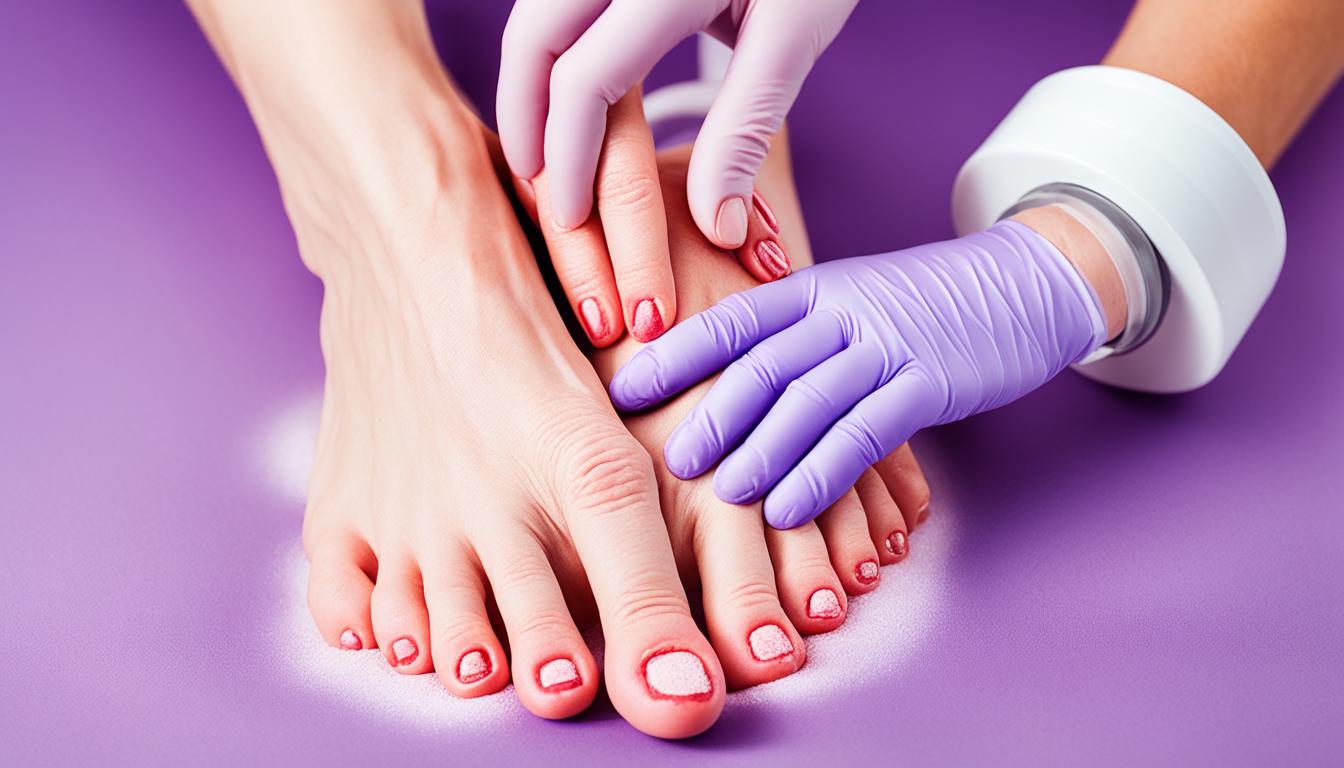Chilblains, also known as perniosis, affect the acral areas. These are the body’s extremities like the fingers, toes, nose, and ears, and can cause red, itchy, and swollen patches. This happens when these areas are exposed to cold.
You might notice your skin turns red or purple and feels itchy when you have chilblains. We’re not exactly sure what causes them, but experts think it has something to do with how our blood vessels react to being cold.
Chilblains can run in families or affect those living in cold places. Having poor circulation or certain health conditions like Raynaud’s disease also makes you more likely to get them. A doctor can usually tell you have chilblains by looking at your symptoms and skin.
To help chilblains get better, keeping the skin warm and avoiding extreme cold is important. Doctors might also suggest using special creams or even prescribe medications that help with blood flow. For very severe cases, treatments like stem cell therapy could be an option, but more research is needed first.
To stop chilblains from happening, plan ahead in cold weather. Wear warm clothes and keep your skin moist. If you think you have chilblains, seeing a doctor and following their advice can go a long way in managing the condition and avoiding problems.
Key Takeaways:
- Chilblains, also known as perniosis, are inflammatory lesions that develop in acral areas due to exposure to cold temperatures.
- Symptoms of chilblains include sensitivity to cold, skin discoloration, itching, swelling, and blistering.
- Causes of chilblains are believed to be related to abnormal blood vessel responses to cold temperatures.
- Risk factors for chilblains include a family history of the condition, living in cold climates, poor circulation, and certain medical conditions.
- Diagnosis is typically based on a clinical examination and the presence of characteristic symptoms and lesions.
Causes and Risk Factors of Chilblains
Chilblains, also known as perniosis, happens when skin in cold areas inflames. It’s not fully known why this occurs. But, it seems linked to how blood vessels react to the cold.
When it’s cold, skin blood vessels narrow. This cuts off normal blood flow, meaning the skin doesn’t get enough oxygen and nutrients. This can cause inflammation and lead to chilblains forming.
Risk factors for chilblains include:
- A family history of chilblains makes you more likely to get them.
- Living in very cold places, with harsh weather, increases your chances of chilblains.
- If you have poor blood flow in your hands and feet, due to poor circulation, you’re more at risk.
- Having certain health conditions such as Raynaud’s disease or lupus can also up your risk.
- Those who have had chilblains before, or get really cold easily, are at increased risk.
It’s crucial to know these causes and risks of chilblains. This knowledge can help you take steps to avoid them. Being mindful of why and how chilblains occur allows for better prevention.
| Risk Factors | Explanation |
|---|---|
| Family history of chilblains | Genetic predisposition to chilblains increases the likelihood of developing the condition. |
| Living in cold climates | Exposure to extreme cold temperatures and harsh weather conditions increases the risk of chilblains. |
| Poor circulation | Compromised blood flow to the extremities can lead to a higher susceptibility to chilblains. |
| Medical conditions | Certain medical conditions, such as Raynaud’s disease, lupus, and scleroderma, elevate the risk of chilblains development. |
| Previous history of chilblains or cold sensitivity | Individuals with a previous history of chilblains or heightened sensitivity to cold temperatures are more prone to developing the condition. |
Diagnosis and Treatment of Chilblains
Diagnosing chilblains relies on a close look during a physical exam. The doctor will note any unique symptoms or skin issues. They’ll also ask about your past health. Sometimes, they might even take a small skin sample for further checking. It’s key to see a doctor or nurse to pinpoint what’s wrong.
To control chilblains, focus on staying warm and dry. Wear cozy clothes and shoes. Try to avoid the cold as much as possible. Keeping your skin moist is also a good idea. These steps can help stop chilblains from coming back.
If you have mild chilblains, taking care of yourself may be enough. Use warm packs and gentle creams. You can take pain relief pills too. In serious cases, the doctor may give you stronger medication. They might also recommend new treatments like stem cell therapy. This method uses special cells to help the body heal itself better.
Treating chilblains early is crucial. With the right care, you can feel better and avoid big problems. Seeing a pro means you’ll get the best plan for your health. It’s also about dressing warm and trying new treatments when needed. Good care can make a big difference for anyone dealing with chilblains.

